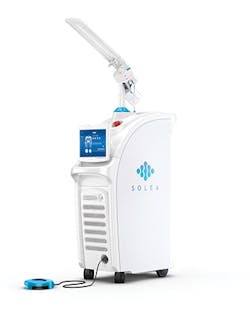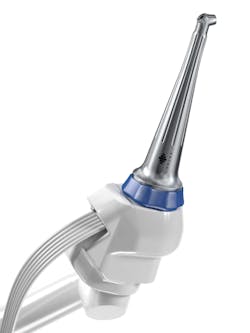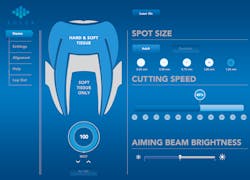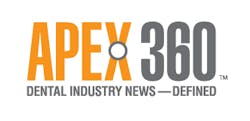An inside look at the Patterson-Convergent distribution deal: Interview with Convergent Dental CEO Michael Cataldo
What made Patterson the next "right" distributor for Solea?
It was about core values (and, of course, good business).
Since bringing the (truly) revolutionary Solea CO2 laser to market in 2013, Convergent Dental has continued to evolve its sales and distribution strategy. Convergent sold the anesthesia-free hard- and soft-tissue laser direct to dentists until February 2015, at which time it added its first distribution partner, Benco Dental. Then, in October 2016 at the American Dental Association Annual Session, Convergent announced it had reached a second distribution agreement—this time with Patterson Dental. I caught up with Convergent CEO Michael Cataldo to talk about the genesis of that deal, what Patterson brought to the table, and the deal's immediate impact.
What made Patterson an attractive distribution partner? At the ADA meeting you told me you had choices, so why Patterson?
There are a number of things. One, obviously, is Patterson's unquestionable track record in the dental equipment sales category. Their success with CEREC and other products speaks for itself. And there is—as I'm discovering—a big difference in sales forces out there. What Patterson is really effective with is talking to dentists about how to grow by investing in successful strategies, especially technology. There are companies out there that focus on how dentists can save on supplies, but [those companies] are not as comfortable or effective when it comes to talking about investing to grow. So Solea is obviously a natural fit for Patterson. It's not like we had to get them out of their comfort zone to talk about a $100,000 piece of equipment and how it benefits the dental practice.
So that's number one, just their success, experience, and comfort in selling our type of equipment.
The second thing is credibility. Hard-tissue lasers have had a rough ride in the marketplace. There's been a lot said and a lot promised, but there has not been a lot delivered before Solea came along. So even though we know that we really do deliver on our promises, there's still a stigma that everybodyhas been aware of—including Patterson. So Patterson watched carefully, from a distance, and took their time before they got close. When they approached us, it was because they had done their homework and come to the conclusion that Solea was for real.
I think the fact that they picked us up absolutely sends a message to dentists who were considering investing or wondering if this was for real. They look to Patterson, a dental equipment leader, and say, "OK, if Patterson says it's good, it must be good."
So credibility is definitely a benefit. And by the way, we've seen that in spades, meaning we've already seen a few dentists who have been looking at Solea for a long time, or who have kind of looked at it and went away, and then all of the sudden they came back and purchased it. It was because their Patterson rep said, "Yeah, it's a great product."
You and I talked at [the ADA meeting] about culture, which is maybe the biggest deal of all for us. We've worked really hard to keep our promises. I'll be more clear about it: For us, the customer and the customer’s success is first. It's more important than the money. That may be a subtle difference because we're all in business here, but Patterson has a culture of "customer first, money second," and so do we. I could feel it in the negotiations around the deal. Now, since the deal has been signed and implemented, I can see it. We're on the same page: just do the right thing and the money will come. Don't worry about the money. I think that leaves prospects and customers feeling more comfortable, and in the long run it sells more product.
All those things made Patterson a very attractive partner, and it's bearing itself out already.
I wish I could tell you there was a benefit that we hadn't anticipated. But let's talk more about the ones we are seeing that may be news to you. How does that sound?
Yes, go ahead.
I think there are benefits both ways, and what I mean by that is for both companies. Distribution leverage, more reach, and selling more systems is a benefit for Convergent Dental. Credibility…we already mentioned that. That's a benefit for Convergent Dental.
I think for Patterson, obviously it's another significant product that they can add to their portfolio. It also creates a good opportunity for them to talk to their customers about how to grow their practices. I think that having yet another piece of equipment in their portfolio that really works and has a big impact...that's something special.
They say, "The sum is greater than the whole of its parts...," right?
Sure, of course.
Well, when you put together a cone beam unit, CAD/CAM, and a Solea laser in a practice...wow. We can see it. Those practices really grow.
Sometimes we see practices that have experienced significant growth with their other technology investments, and you're tempted to think, "Well, the next technology they add is not going to have that much of an impact because they've already created all the efficiencies they can." You reason that, sooner or later, the practice reaches a point of diminishing returns when it keeps adding technology...
Right, makes sense...
But that's not the case. The practices that have already invested in technology and worked to create the most efficient workflows—they are the ones that actually get the biggest uptick the fastest when they add Solea. It's almost as if you get better at [adding technology] the more technology you add. I don't know any other way to explain it. It might be because the office staff is already experienced in talking about technology and helping customers feel more excited about it. It might be that the practice has been through the process of adding technology, tweaking the workflow to accommodate it, and when they add Solea they change the workflow faster. Whatever it is, the ones that already have the most technology clearly drive the fastest return on investment from Solea.
So, that's something we're surprised at. It's not necessarily a benefit to us or Patterson, but to the docs.
I'd love to tell you that there's something unique [from our other processes], but there's not. It's exactly the same. So when we think about that, you've known me long enough to know that we are absolutely committed to identifying a model that works and just doing it. That's where the priority is. I know I sound like a broken record saying, "Do the right thing for the customer...," but that's how it is.
When it comes to the first Soleas we sold, it was all direct, right? So before Benco, before Patterson, we established a very liberal return policy. Why? Because we believed we should be on the hook.
It makes sense, right? Why force a customer to keep the laser if it's not working for them? That's number one. As it stands now, very few Soleas come back to us. But our return policy sends a message to customers thatwe stand behind every promise we make. If we don't keep our promises...or if we did, but the customer doesn't think we did...or if we did and the customer just changes his or her mind, we say, "Send it back." We want you to be happy, even if you don't end up with a Solea.
By the way, to be successful at that, we had to build a great product and follow it up with great training—because if dentists aren't trained properly, that thing's going to come back. The same goes for great support in the event that someone needs additional training, or the system goes down, or whatever. The follow-up has to be tremendous when we're totally on the hook.
It's the same thing when it comes to supporting our partners. For both Benco and Patterson, we provide sales training, sales support, and all the after-sales customer support and services. Training, support, services, everything—it comes from us. [Our distributors] are now entrusting us with their customers. It puts us on the hook to get it right.
Being committed is just as important when it comes to training partners' sales teams. How do we train their sales reps? How do we re-train them when they need help? How do we support them in sales situations? It's kind of the same thing as with the customer: whatever you need, we're there. And...when you do need us and we do show up...it's going to be a good experience. We're going to do our job right. That's the way to succeed with a customer and with a distribution partner.
Now I know it's been only a few weeks, but since the ADA, have you seen any kind of immediate results, whether it's an uptick in units sold or just something you can quantify, like inquiries into the product?
Yes. By the time this week is over, Patterson will have sold more than $2 million in systems already. So we've seen immediate sales success, and on top of that, leads. The activity from Patterson has been through the roof. They've doubled our volume of new prospective buyers. It's very clear that Patterson will multiply our sales by some number—not add, but multiply.
How does this affect your partnership with Benco? Here's what I mean: In your position, how do you manage having two premier distributors and making sure that they both get the attention they deserve? How do you handle that?
Benco, obviously, is still a hugely important partner for us. The answer to your question is pretty straightforward. The first thing we do is make sure there's no possibility of bias in terms of my reps trying to push a dentist one way or the other. It doesn't matter—direct, Benco, or Patterson. My reps gets paid the same amount no matter who sells it. So that's number one. My reps are incentivized to help everybody. Our partners feel that.
The second thing is to never get in the way of a dentist's decision. Our job is to make sure that if Solea's a good fit for a dentist, the dentist buys Solea. That's it. They can buy from whomever they're most comfortable buying from. If a dentist says to us, "I love Solea. Whom should I buy from, Patterson or Benco?" Our answer is, "They're both great."
In terms of managing multiple partners, it isn't an issue so long as we're focused on being the experts on our own product and we don't get involved at all in who a dentist buys from. And to tell you the truth, there's actually not a lot of crossover in the market. Most dentists already buy from one company or the other. It works out pretty well.
Benco has been a tremendous partner. What I've said about Patterson—regarding the cultural mix and putting the emphasis on the customer, not on the money—is the same with Benco. Benco's wonderful about that. I think that's why their customers love them so much. So, culturally, there's an alignment with both Benco and Patterson with Convergent Dental. Our core values are aligned.
Editor's note:
This article first appeared in the Apex360 e-newsletter. Apex360is a DentistryIQ partner publication for dental practitioners and members of the dental industry. Its goal is to provide timely dental information and present it in meaningful context, empowering those in the dental space to make better business decisions. Visit the Apex360 home page here, and subscribe to the Apex360 e-newsletter here.
For the most current dental headlines, click here.
About the Author

Zachary Kulsrud
Zachary Kulsrud is the editorial director for Endeavor Business Media's dental group, publishers of Dental Economics, DentistryIQ, Perio-Implant Advisory, and RDH magazine.
Updated July 7, 2020







